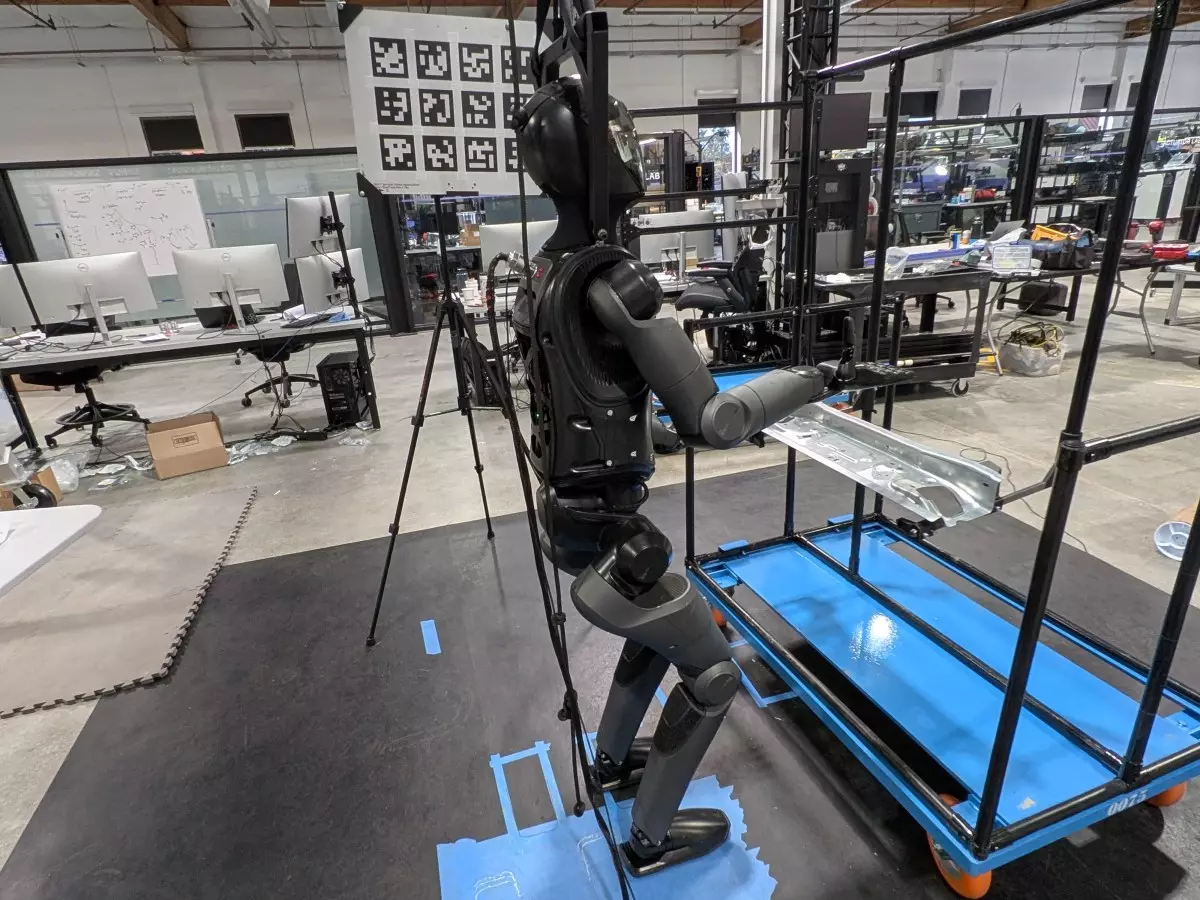In the rapidly evolving world of robotics, change can often feel like a constant state, especially in a hub like Silicon Valley. One company making significant strides in this sector is Figure, a robotics firm devoted to developing humanoid robots. Following my recent visit to Figure’s headquarters in Sunnyvale, California, it is evident that the organization is not only making substantial advancements in robotics technology but is also expanding its operational scale.
From Obscurity to Prominence
When I first arrived at Figure’s headquarters, the site reflected a typical Silicon Valley office—modest and unassuming. However, it quickly became clear that the external signage marking the company’s presence is more than just a branding effort; it symbolizes the company’s growth and ambitions. Over the past 16 months, Figure has transformed from a startup into a bustling tech firm with 130 engineers hard at work. With a sizable investment of $1.5 billion funding on their side, Figure is set to relocate to a larger facility soon, reflecting the organization’s aspirations and burgeoning workforce.
The interior of the headquarters is a testament to Figure’s focus on innovation. Robots of various models, including the older Figure 01, are strewn about the workshop, where they’re dissected, assembled, and trialed for functionality. The atmosphere radiates a poignant blend of excitement and urgency; engineers scramble to ensure the robots are primed for the real-world applications anticipated from them.
Central to Figure’s ongoing projects is their latest humanoid robot, Figure 02. The advancements in this new model mark a significant evolution from its predecessor. The streamlined design of Figure 02 has eliminated cumbersome elements like exposed wires and the external battery pack, opting instead for a more cohesive unit. This transition not only enhances the robot’s aesthetic appeal but may also improve its reliability and performance in practical applications.
During my walkthrough, I observed the company’s newly established systems integration and testing area, where engineers are rigorously examining the robot’s capabilities. This space is critical for stress-testing individual components, further ensuring that the robot can adapt and perform various tasks—an essential function given the diverse environments it will operate in. The gravitational pull of the automotive industry has directed Figure’s focus, particularly following partnerships with major players like BMW. Indeed, the recent deployment of their robots in BMW’s Spartanburg plant signifies a vital stepping stone toward large-scale implementation.
Collaborations within the robotics ecosystem are crucial as they accelerate innovation and market entry. Figure’s proactive engagement with automotive manufacturers illustrates a smart strategy; the automotive industry is familiar with automation, thus offering a relatively welcoming arena for humanoid robots. In addition to Figure, established competitors such as Boston Dynamics and Apptronik are also vying for a share in this burgeoning market. What is noteworthy, however, is that Figure’s focus on humanoid design positions them uniquely amidst a flurry of robotic applications that traditionally veer towards more specialized automation.
Interestingly, the competitive landscape is not limited to automotive applications. Companies such as Agility are exploring consumer-oriented robotic solutions, while others like 1X are targeting domestic environments. As the landscape evolves, the ability to penetrate various sectors will define the success of robotics firms, compelling them to rapidly innovate and refine their products.
Looking Ahead: The Road to Consumer Markets
As Figure envisions moving toward consumer markets, significant challenges lie ahead. A compelling aspect of my conversation with CEO Brett Adcock was his optimistic view regarding pricing; he believes Figure can achieve a sub-$20,000 price point for their robots within a few years, albeit not immediately. This goal is pivotal, as affordability will ultimately determine the accessibility of humanoid robots for consumers.
Presently, Figure is experimenting with domestic applications, including tasks like kitchen assistance and household organization. Such endeavors are reminiscent of early experimental iterations in robotics, where technology is incrementally perfected before widespread adoption. The efficacy of these advanced robots will be scrutinized rigorously, with the first significant evaluations set for the upcoming return to the BMW plant in January.
Figure is poised at the intersection of technological innovation, market opportunity, and industrial collaboration. Their journey exemplifies the broader narrative of a robotics industry that is both maturing and diversifying. As advancements continue, the forthcoming months will significantly shape the future of humanoid robots and potentially define their role within both industry and domestic landscapes.

